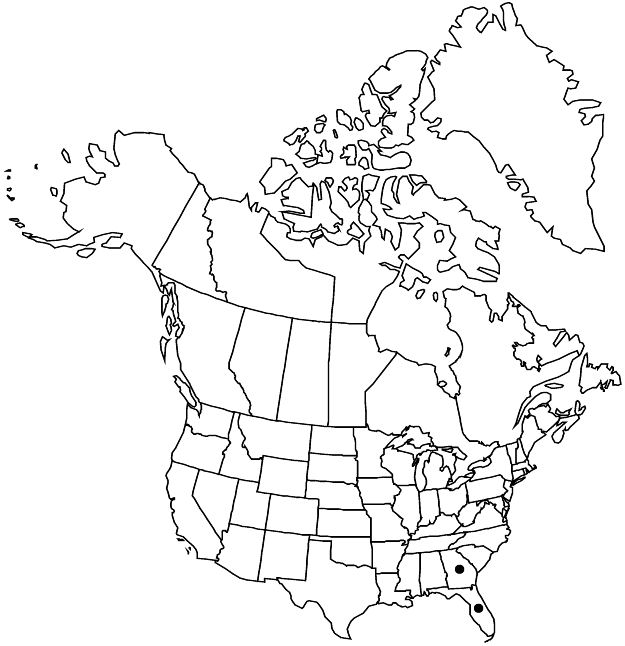Difference between revisions of "Hypericum microsepalum"
Smithsonian Misc. Collect. 258: 456. 1878.
FNA>Volume Importer |
imported>Volume Importer |
||
| (5 intermediate revisions by 2 users not shown) | |||
| Line 11: | Line 11: | ||
|label=Endemic | |label=Endemic | ||
}} | }} | ||
| − | |basionyms={{Treatment/ID/ | + | |basionyms={{Treatment/ID/Basionym |
|name=Ascyrum microsepalum | |name=Ascyrum microsepalum | ||
|authority=Torrey & A. Gray | |authority=Torrey & A. Gray | ||
| + | |rank=species | ||
| + | |publication_title=Fl. N. Amer. | ||
| + | |publication_place=1: 157. 1838 | ||
}} | }} | ||
|synonyms={{Treatment/ID/Synonym | |synonyms={{Treatment/ID/Synonym | ||
|name=Crookea microsepala | |name=Crookea microsepala | ||
|authority=(Torrey & A. Gray) Small | |authority=(Torrey & A. Gray) Small | ||
| + | |rank=species | ||
}} {{Treatment/ID/Synonym | }} {{Treatment/ID/Synonym | ||
|name=Isophyllum drummondii | |name=Isophyllum drummondii | ||
|authority=Spach | |authority=Spach | ||
| + | |rank=species | ||
}} | }} | ||
|hierarchy=Hypericaceae;Hypericum;Hypericum sect. Myriandra;Hypericum microsepalum | |hierarchy=Hypericaceae;Hypericum;Hypericum sect. Myriandra;Hypericum microsepalum | ||
| Line 46: | Line 51: | ||
-->{{#Taxon: | -->{{#Taxon: | ||
name=Hypericum microsepalum | name=Hypericum microsepalum | ||
| − | |||
|authority=(Torrey & A. Gray) A. Gray ex S. Watson | |authority=(Torrey & A. Gray) A. Gray ex S. Watson | ||
|rank=species | |rank=species | ||
| Line 61: | Line 65: | ||
|publication year=1878 | |publication year=1878 | ||
|special status=Endemic | |special status=Endemic | ||
| − | |source xml=https:// | + | |source xml=https://bitbucket.org/aafc-mbb/fna-data-curation/src/2e0870ddd59836b60bcf96646a41e87ea5a5943a/coarse_grained_fna_xml/V6/V6_134.xml |
|genus=Hypericum | |genus=Hypericum | ||
|section=Hypericum sect. Myriandra | |section=Hypericum sect. Myriandra | ||
Latest revision as of 22:19, 5 November 2020
Shrubs, erect to ascending, bushy, with ± numerous, sometimes straggling branches, 1.5–7 dm. Stems: internodes 4-lined at first, eventually 2-lined. Leaf blades narrowly oblong or oblanceolate to linear, 5–15 × 1–3 mm, base not articulated, rounded to cuneate, margins recurved to subrevolute, apex rounded to obtuse, midrib with 1–3 pairs of branches. Inflorescences rounded-pyramidal, 1–3-flowered, narrowly branched, sometimes with 1–3-flowered dichasia or branches from to 4 proximal nodes. Flowers 15–25 mm diam.; sepals persistent, not enclosing capsule, (3–)4(–5), oblong or elliptic-oblong to linear, subequal or equal, 3–5 × 1–1.4 mm; petals (3–)4(–5), bright yellow, obovate (larger pair) to obovate-oblong (smaller pair), 10–12 mm; stamens persistent, 60–70; ovary 3-merous, placentation parietal. Capsules cylindric-ellipsoid to narrowly ovoid-conic, 6–8 × 2.5 mm. Seeds not carinate, 0.9–1 mm; testa linear-foveolate. 2n = 18.
Phenology: Flowering late winter–spring (Feb–May), late fall (Nov).
Habitat: Low, pine flatwoods, moist to wet, on sand
Elevation: 0–100 m
Discussion
Hypericum microsepalum is related to H. cistifolium, not to the other four-petaled species attributed to Ascyrum, and can be distinguished from it by the bushier habit and smaller leaves and by the usually four-merous flowers with larger petals.
Hypericum isophyllum Steudel is an illegitimate name for H. microsepalum.
Selected References
None.
